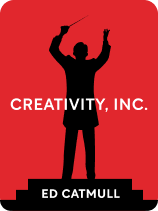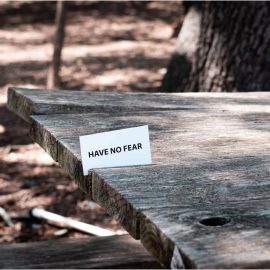

This article is an excerpt from the Shortform book guide to "Creativity, Inc." by Ed Catmull. Shortform has the world's best summaries and analyses of books you should be reading.
Like this article? Sign up for a free trial here .
Are you looking for Creativity, Inc. book club questions? How do you apply the lessons of the book to your own creative aspirations or creative workplace?
These 23 Creativity, Inc. book club questions explore key management strategies. They are especially helpful in the context of managing creative work and creative teams.
Read on for a list of Creativity, Inc. book club questions separated by topic area.
Creativity, Inc. Book Club Questions
When Ed Catmull, co-founder of Pixar Animation Studios, started his career, he had one goal: Create films using computer-generated animation. Despite a multitude of challenges, Catmull worked tirelessly to advance the technology of computer animation and, eventually, co-founded Pixar to marry his love of animation with his expertise in computer technology.
Through the journey of Pixar’s creation, Catmull developed leadership strategies that fostered creativity in the workplace while ensuring that the company remained profitable and successful. In Creativity, Inc., Catmull breaks down the most important factors in building and sustaining a creative culture. From removing fear from failure and protecting new ideas, Catmull explains the ways Pixar’s creative culture allowed it to grow into the animation behemoth it is today. To better understand the book, use these Creativity, Inc. book club questions.
Avoid Micromanagement
Micromanagement can stifle creativity and prevent your team from doing their best work.
- Think of a time that someone micromanaged you. How did it make you feel? Describe the situation and how it impacted your work.
- Now, think about the way you would have handled the situation if you hadn’t been told how to. Would you have been more effective? Describe your solution.
- With this situation in mind, describe a situation in which you’ve micromanaged someone else.
- Knowing how micromanaging impacted your work, how could you have approached the situation differently to avoid micromanaging your employee?
Promote Candidness Through Feedback
Promoting candidness in the workplace allows you to hone your projects through feedback and discover issues you may not have noticed with these three Creativity, Inc. book club questions.
- Think about your current workplace. What feedback systems do you have in place? Are they effective?
- Using Braintrust Meetings and Notes Day as a guide, how could you build feedback systems into your organization that promote candidness in a safe environment?
- Candidness requires safety and comfort. List three ways that you could help your employees become comfortable delivering critiques.
Navigate Your Blind Spots
Your blind spots may contain problems that could have potentially disastrous consequences. To ensure the safety of your organization, take the time to find the problem areas that are currently hidden from your view.
- Think of a time where a team member seemed to agree with everything you said. Did their support seem genuine or could you detect signs they were just telling you what they thought you wanted to hear? Describe the situation.
- Think of your current workplace. Are candid feedback and open communication promoted? Why or why not? (For instance, do you believe a lower-level employee would feel comfortable giving feedback to the CEO?)
- What ways could you promote candidness to ensure that your employees give their honest observations?
- Think of a recent problem you had on a project. How could you have used perspectives from different departments to develop an effective solution?
Keep Your Team Creative
Expand your team’s worldview promotes creativity in the workplace and highlight the importance of feedback meetings, research, boundaries, technology, experimentation, attention to detail, postmortems, and learning opportunities with these eight Creativity, Inc. book club questions.
- Frequent feedback meetings are important to stay aware of the goings-on in your workplace. Using Dailies (Pixar’s daily feedback meetings) as a guide, how could you implement regular feedback sessions to keep updated on current projects?
- Research is important to creative work. Think about your current workplace. What resources could you use to promote research in your workplace? This could include trips, online resources, and guest artists.
- Boundaries can help your team discover creative solutions while staying efficient. Think of a project that went overboard with unnecessary details. What boundaries could you have set to help your project stay focused on the important aspects?
- Technology can help artists with their work. Think of a project you’ve worked on that used outdated technology. In what ways could you have used updated technology to make that project more efficient?
- Experimentation leads to innovative and original work. Think of your current workplace. In what ways could you promote experimentation? Think about think-tanks, experimental spaces, and giving employees freedom to solve problems.
- Attention to detail requires that you abandon your preconceived notions. Using Pixar’s drawing class for inspiration, look outside of your window. Find an object and describe what you see. Look for tiny details such as texture and color.
- Postmortems give you the chance to address issues directly following a project. Think about a project you recently completed. Think about three issues you faced during that project and how you plan to address them in future projects.
- Learning opportunities give your employees the opportunity to think out-of-the-box. What opportunities could you offer to your team?
Create a Mental Model
Visualization helps you move through a project while staying focused on your goals and comfortable with uncertainty.
- Think about an upcoming project. Describe your role and your responsibilities for this project.
- Using the description of your role, develop a mental model that mimics your responsibilities and defines your process. Think about the mental models of sailing a ship, driving through a tunnel, and being a shepherd for inspiration.
Promote Creativity in Your Workplace
Just as Catmull applied these concepts to Disney, think about how you can start to make changes within your organization with these last two Creativity, Inc. book club questions.
- Having read through these concepts, list three ideas that you could implement into your organization immediately.
- What are three long-term goals that you could set for your team?

———End of Preview———
Like what you just read? Read the rest of the world's best book summary and analysis of Ed Catmull's "Creativity, Inc." at Shortform .
Here's what you'll find in our full Creativity, Inc. summary :
- How Pixar went from selling computers to successful animation studio
- What it takes to build a creative workplace culture
- Why George Lucas sold Pixar to Steve Jobs






